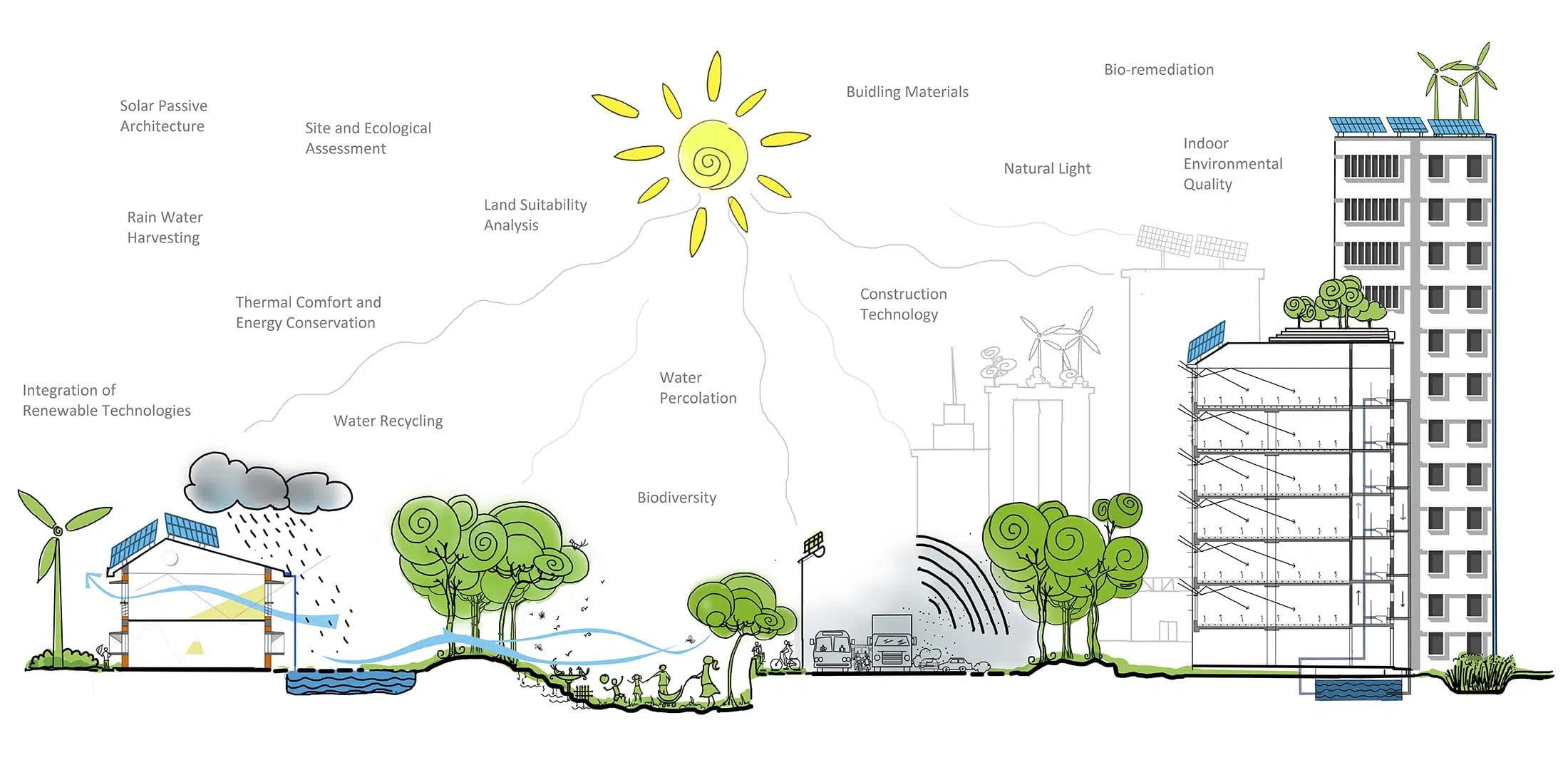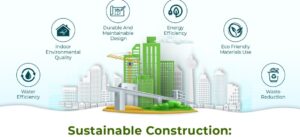
Human nature is resistant to change; we just do not want to move out of our comfort zone even if it could open up a whole new world of possibilities to us.
Green architecture was considered a fad, a fashion statement for long; people were just not ready to accept a new concept.
Why would they go for new and less popular building materials or new techniques and technologies leaving the age-old, time-tested construction methodologies?
Well, eco-friendly buildings are no more a question of choice, there is no alternative left now.
Global warming, fast-depleting energy resources, growing scarcity of water, pollution related diseases- there are a thousand reasons for going green without any further delay.
The reason for taking up the need for producing more and more green buildings before going into the details of green architecture techniques is evident- we have to DO IT NOW.
Cost can take a back seat. In fact, green buildings save you a lot of operating cost. Let us first take a look at a few hard facts:
- Buildings account for more than 50% of world’s material and energy consumption;
- Buildings are responsible for nearly 18% of world’s fresh water use; and
- Account for 25% of world’s total wood harvested.
Producing more green buildings has an impact not only on the world environment, but it brings direct benefits to all of us too. As our actions are always directed by what something has in store for us, let us discuss some of the benefits sustainable architecture brings to us all.

Increased efficiency, reduced cost:
Use of new and innovative materials, techniques and technologies ensures that buildings are more efficient. This can be achieved through various methods like using the sun and wind orientation to reduce energy needs and employing equipment that increase the efficiency of the building. This reduces the need for HVAC (heating, ventilation, air-conditioning equipment, thus drastically reducing the operational cost. Some of this equipment may cost more at the installation stage, but they make up for it very quickly. Proper insulation and sealing of air leaks are also quite significant.
Health of the users:
Green architecture is not just about energy conservation; it’s about preserving anything that is non renewable. It aims to protect environment, conserve water and look after human health. The goal of green architecture is to improve the quality of water and air inside a structure as indoor pollution is found to be far worse for human health than the outdoor pollution. Indoor pollutants like radon and second-hand smoke are very detrimental to the health of the inhabitants; eco-friendly buildings aim to minimize them.
Reducing waste:
One important step toward protecting our environment is to produce less waste. Ecologically responsible architecture accomplishes it by using renewable materials like plant matter etc or by reusing traditional materials like recycled stone and metals etc. It can also help the occupants waste fewer resources during their daily chores; for example, recycled water may be used for irrigation or other non-drinkable purposes, thus saving precious water.
There are many facets to green architecture, each one as fascinating as the other. We will come up with some interesting aspect of this new-age concept in our next post.
Sources
https://nestcon.com/sustainable-construction-methods-and-benefit
https://drt8cv58r2b23.cloudfront.net/images/blog/sustainability_elements
https://blog.novatr.com/blog/sustainable-architecture-scope-and-careers
ABOUT THE AUTHOR

Sandeep Singh is an architect from IIT Roorkee.
Ten years after graduating, he lost his vision to genetic Diabetes.
He reinvented his career and turned writer.
He has authored two fiction books and writes blogs on
Architecture, Outsourcing, Safety and a variety of other
subjects for different organizations. He also chairs and runs two NGOs
